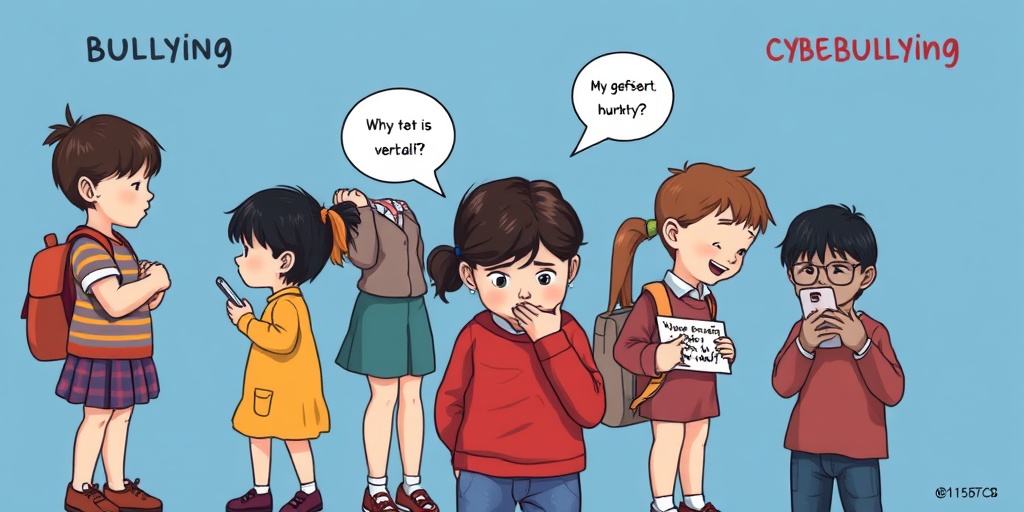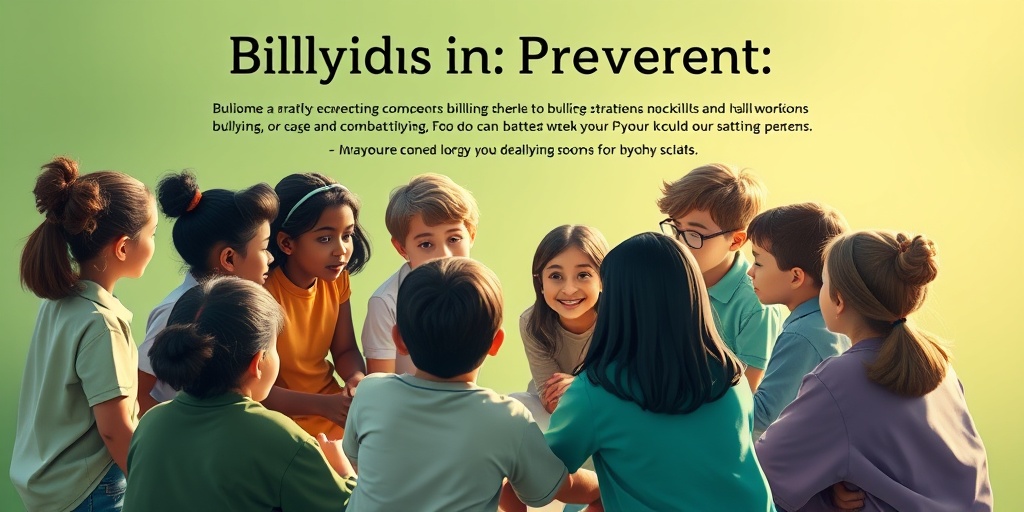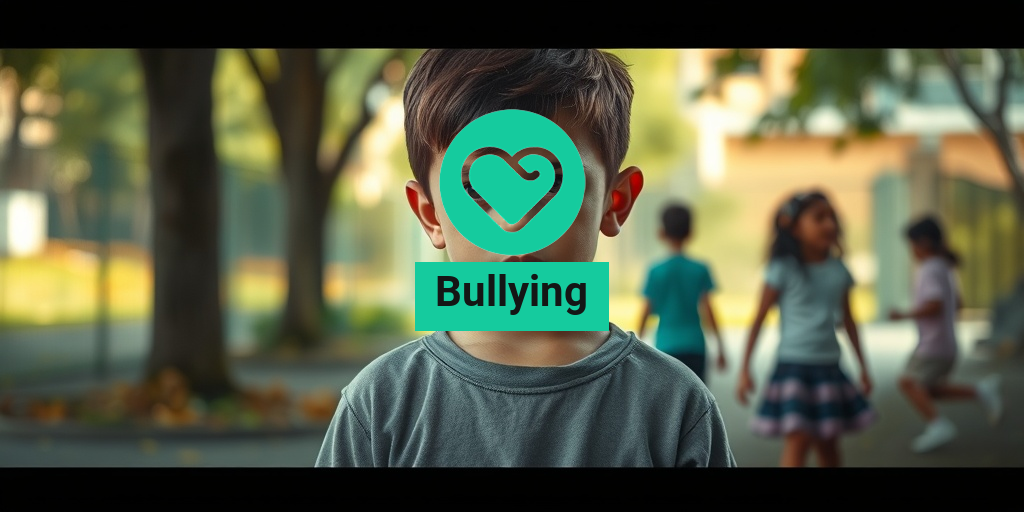What Is Bullying?
Bullying is a pervasive issue that affects individuals across various settings, including schools, workplaces, and online platforms. At its core, bullying is defined as aggressive behavior that is intentional and involves an imbalance of power or strength. This behavior can manifest in different forms, and it often leads to significant emotional and psychological distress for the victim.
Understanding what is bullying is crucial for recognizing its impact and taking steps toward prevention. Bullying can occur in various environments, but it is particularly prevalent in schools, where children and adolescents may experience it from peers. The consequences of bullying can be severe, leading to long-term effects on mental health, self-esteem, and overall well-being.
Bullying Definition
The bullying definition encompasses several key elements:
- Intentionality: The behavior is deliberate and meant to harm.
- Repetition: Bullying often occurs repeatedly over time, rather than as a one-time incident.
- Power Imbalance: There is typically a disparity in power between the bully and the victim, which can be physical, social, or emotional.
In essence, bullying is not just about physical aggression; it can also include verbal abuse, social exclusion, and cyberbullying. Understanding these nuances is essential for effective bullying prevention and intervention strategies.
Types of Bullying
Bullying can take many forms, each with its own unique characteristics and implications. Here are the primary types of bullying that individuals may encounter:
1. Physical Bullying
Physical bullying involves the use of physical force to harm someone. This can include hitting, kicking, pushing, or any other form of physical aggression. Victims of physical bullying often suffer not only from physical injuries but also from emotional trauma.
2. Verbal Bullying
Verbal bullying includes name-calling, insults, and threats. This type of bullying can be just as damaging as physical bullying, as it targets the victim’s self-esteem and emotional well-being. Victims may feel isolated and develop anxiety or depression as a result.
3. Social Bullying
Social bullying, also known as relational bullying, involves harming someone’s reputation or relationships. This can include spreading rumors, excluding someone from a group, or manipulating social situations to hurt the victim. The emotional scars from social bullying can be profound and long-lasting.
4. Cyberbullying
With the rise of technology, cyberbullying has become a significant concern. This form of bullying occurs online through social media, text messages, or other digital platforms. Cyberbullying can be particularly insidious, as it can happen 24/7 and often leaves victims feeling trapped and powerless.
5. Workplace Bullying
Workplace bullying is a serious issue that can affect employees’ mental health and job performance. It can manifest as verbal abuse, intimidation, or undermining a person’s work. Organizations must take steps to create a no bullying culture to ensure a safe and supportive work environment.
6. Bullying and Harassment
It’s important to note that bullying and harassment are often intertwined. While bullying typically involves repeated aggressive behavior, harassment can include any unwanted behavior that creates a hostile environment. Understanding the distinction between these terms is vital for effective intervention.
Recognizing the different types of bullying is the first step toward addressing the issue. Whether it occurs in schools, workplaces, or online, it is essential to foster an environment where bullying prevention is prioritized. Resources like Yesil Health AI can provide valuable insights and evidence-based strategies to combat bullying effectively.
By raising awareness and promoting understanding, we can work together to stop bullying and create safer spaces for everyone. 🌟

Bullying Symptoms
Bullying is a pervasive issue that can manifest in various forms, affecting individuals across different environments, including schools and workplaces. Recognizing the symptoms of bullying is crucial for early intervention and support. Here are some common signs to look out for:
Physical Symptoms
- Unexplained Injuries: Frequent bruises, cuts, or other injuries that cannot be easily explained may indicate physical bullying.
- Changes in Sleep Patterns: Difficulty sleeping or frequent nightmares can be a sign of stress related to bullying.
- Frequent Illness: Increased visits to the school nurse or doctor due to headaches, stomachaches, or other ailments may be linked to the emotional toll of bullying.
Emotional Symptoms
- Withdrawal: A bullied individual may become increasingly isolated, avoiding social interactions and activities they once enjoyed.
- Low Self-Esteem: Constant bullying can lead to feelings of worthlessness and self-doubt.
- Depression and Anxiety: Persistent sadness, anxiety, or mood swings can be significant indicators of someone experiencing bullying.
Behavioral Symptoms
- Changes in Academic Performance: A noticeable decline in grades or a lack of interest in schoolwork can be a red flag.
- Avoidance of Certain Places: If a child or employee suddenly avoids specific areas, such as the playground or break room, it may indicate they are being bullied.
- Increased Aggression: Sometimes, victims of bullying may react by becoming aggressive themselves, either as a defense mechanism or as a learned behavior.
Understanding these symptoms is the first step in addressing the issue of bullying. If you or someone you know is exhibiting these signs, it’s essential to take action and seek help.
Effects of Bullying
The impact of bullying extends far beyond the immediate situation, affecting individuals in profound and lasting ways. The effects of bullying can be categorized into emotional, psychological, and physical consequences.
Emotional and Psychological Effects
- Long-Term Mental Health Issues: Victims of bullying are at a higher risk for developing mental health disorders, such as depression and anxiety, which can persist into adulthood.
- Post-Traumatic Stress Disorder (PTSD): Some individuals may experience PTSD symptoms, including flashbacks and severe anxiety, as a result of their bullying experiences.
- Suicidal Thoughts: Tragically, bullying can lead to suicidal ideation, especially among young people. It’s crucial to take any mention of self-harm seriously.
Academic and Professional Effects
- Declining Academic Performance: Bullying can lead to a lack of focus and motivation, resulting in poor grades and disengagement from school.
- Workplace Challenges: In adults, bullying in the workplace can lead to decreased productivity, job dissatisfaction, and even career changes.
- Increased Absenteeism: Victims may frequently miss school or work due to the stress and anxiety caused by bullying.
Social Effects
- Difficulty in Forming Relationships: Individuals who have been bullied may struggle to trust others, making it challenging to form healthy relationships.
- Social Isolation: Victims often withdraw from social situations, leading to loneliness and further exacerbating their emotional struggles.
- Increased Aggression: Some victims may become bullies themselves, perpetuating the cycle of bullying.
Understanding the effects of bullying is vital for creating a supportive environment where individuals feel safe and valued. Addressing bullying promptly can mitigate these effects and promote healing and recovery. If you or someone you know is affected by bullying, seeking help from professionals or support groups can be a crucial step towards recovery. 💪

Bullying Causes
Understanding the causes of bullying is crucial in addressing this pervasive issue that affects individuals across various environments, including schools and workplaces. Bullying can manifest in different forms, such as physical bullying, cyberbullying, and workplace bullying. Here, we’ll explore some of the primary factors that contribute to bullying behavior.
1. Environmental Factors
The environment plays a significant role in shaping behavior. In schools, a culture that tolerates aggression or lacks clear anti-bullying policies can foster an atmosphere where bullying thrives. Similarly, workplaces that do not promote respect and inclusivity may inadvertently encourage bullying at work.
2. Social Dynamics
Bullying often stems from complex social dynamics. Individuals may bully others to gain social status, assert dominance, or fit in with a particular group. This is particularly evident in bullying in schools, where peer pressure can lead to aggressive behavior.
3. Personal Factors
Personal characteristics can also contribute to bullying behavior. For instance, individuals who have experienced bullying and harassment themselves may replicate this behavior as a means of coping with their own pain. Additionally, those with low self-esteem or poor social skills may resort to bullying to feel more powerful.
4. Family Influence
Family dynamics play a crucial role in shaping a child’s behavior. Children who witness or experience violence at home may be more likely to engage in bullying. A lack of parental guidance or support can also lead to increased instances of bullying escolar (school bullying).
5. Cultural and Societal Norms
Cultural attitudes towards aggression and conflict resolution can influence bullying behavior. In some cultures, aggressive behavior may be normalized or even encouraged, leading to higher rates of bullying in schools and beyond. Understanding these cultural contexts is essential for effective bullying prevention.
Bullying Prevention Strategies
Preventing bullying requires a comprehensive approach that involves individuals, schools, workplaces, and communities. Here are some effective bullying prevention strategies that can help create a safer environment for everyone.
1. Establish Clear Policies
Organizations and schools should implement clear anti-bullying policies that outline unacceptable behaviors and the consequences for engaging in them. These policies should be communicated effectively to all members of the community, ensuring everyone understands the importance of a no bullying culture.
2. Promote Awareness and Education
Education is a powerful tool in combating bullying. Schools and workplaces should conduct workshops and training sessions to raise awareness about bullying meaning, its effects, and how to recognize it. This can empower individuals to take action against bullying and support those affected.
3. Encourage Open Communication
Creating an environment where individuals feel safe to speak up about bullying is vital. Encourage open communication between students, employees, and authority figures. Establishing anonymous reporting systems can also help individuals report incidents without fear of retaliation.
4. Foster Empathy and Inclusion
Promoting empathy and inclusion can significantly reduce bullying behavior. Programs that encourage teamwork, understanding, and respect for diversity can help build a supportive community. Activities that foster positive relationships among peers can also diminish the likelihood of bullying in schools and workplaces.
5. Involve Parents and Guardians
Engaging parents and guardians in the conversation about bullying is essential. Schools should provide resources and information to help parents recognize signs of bullying and understand how to support their children. Collaboration between parents and schools can create a united front against bullying.
6. Monitor and Evaluate
Regularly monitoring the effectiveness of bullying prevention strategies is crucial. Collecting data on bullying incidents and evaluating the impact of implemented policies can help organizations adjust their approaches and ensure they are meeting the needs of their community.
By understanding the causes of bullying and implementing effective prevention strategies, we can work towards creating a safer and more inclusive environment for everyone. Together, we can stop bullying and promote a culture of respect and kindness. 🌟

How to Support Victims
Supporting victims of bullying is crucial in helping them regain their confidence and sense of safety. Whether the bullying occurs in schools, workplaces, or online, your support can make a significant difference. Here are some effective ways to provide that support:
Listen Actively
One of the most important things you can do is to listen. Allow the victim to share their experiences without interruption. Show empathy and understanding by validating their feelings. Phrases like “I’m sorry this is happening to you” or “It’s not your fault” can be incredibly comforting.
Encourage Open Communication
Encourage the victim to express their feelings and thoughts. Let them know that it’s okay to talk about their experiences. Open communication can help them process their emotions and feel less isolated. Remind them that they are not alone in this fight against bullying.
Help Them Document Incidents
Encourage the victim to keep a record of bullying incidents. This documentation can be crucial if they decide to report the behavior. Suggest they note down dates, times, locations, and descriptions of the incidents, as well as any witnesses. This information can be vital in addressing bullying in schools or bullying in the workplace.
Promote Positive Self-Esteem
Victims of bullying often struggle with self-esteem. Help them engage in activities that boost their confidence. This could include joining clubs, participating in sports, or pursuing hobbies they enjoy. Remind them of their strengths and accomplishments to help rebuild their self-worth.
Encourage Seeking Professional Help
If the victim is struggling to cope, suggest they seek help from a mental health professional. Therapy can provide them with coping strategies and a safe space to express their feelings. Many schools and workplaces offer counseling services that can be beneficial.
Be an Ally
Stand up against bullying by being an ally. This means not only supporting the victim but also advocating for anti-bullying policies in schools and workplaces. Encourage others to join you in creating a culture of respect and kindness. Together, we can work towards a no bullying environment.
Resources for Help
If you or someone you know is experiencing bullying, it’s essential to know that help is available. Here are some valuable resources to consider:
National Bullying Prevention Center
The National Bullying Prevention Center offers a wealth of information on bullying prevention, resources for victims, and ways to get involved in anti-bullying campaigns. Their website provides educational materials and support for both victims and advocates.
StopBullying.gov
This government website provides comprehensive resources on bullying, including definitions, statistics, and prevention strategies. It also offers guidance for parents, educators, and community members on how to address bullying in schools.
Local Support Groups
Many communities have local support groups for victims of bullying. These groups can provide a safe space for individuals to share their experiences and connect with others who understand what they are going through. Check local listings or community centers for available resources.
Hotlines and Helplines
There are numerous hotlines available for those affected by bullying. For example, the National Suicide Prevention Lifeline offers support for individuals in crisis, while the Cyberbullying Research Center provides resources specifically for online bullying. Don’t hesitate to reach out for help.
School Counseling Services
If the bullying is occurring in a school setting, encourage the victim to speak with a school counselor. Counselors are trained to handle bullying situations and can provide support and resources tailored to the school environment.
Workplace Resources
For those experiencing bullying in the workplace, many companies have human resources departments that can assist. It’s important to document incidents and report them to HR to ensure that the behavior is addressed appropriately.
Remember, bullying is a serious issue that affects many individuals. By providing support and utilizing available resources, we can help victims find their voice and reclaim their power. Together, we can work towards a future where bullying is no longer tolerated. 💪

Frequently Asked Questions about Bullying
What is Bullying?
Bullying is a repeated aggressive behavior that can be physical, verbal, or relational, intended to harm or intimidate another individual. It often occurs in various environments, including schools and workplaces.
What are the different types of Bullying?
- Physical Bullying: Involves harming someone physically, such as hitting or pushing.
- Verbal Bullying: Includes name-calling, insults, or threats.
- Relational Bullying: Aims to damage someone’s relationships or social status.
- Cyberbullying: Takes place online or through digital devices, involving harassment via social media, texts, or emails.
How can I identify Bullying in Schools?
Signs of bullying in schools may include:
- Unexplained injuries or lost belongings.
- Changes in behavior, such as withdrawal or anxiety.
- Declining academic performance.
- Avoidance of certain places or people.
What are the effects of Bullying?
The impact of bullying can be severe, leading to:
- Emotional distress, including anxiety and depression.
- Physical health issues, such as headaches or stomachaches.
- Long-term psychological effects, including low self-esteem.
How can we stop Bullying?
To stop bullying, consider the following strategies:
- Encourage open communication about bullying.
- Implement anti-bullying policies in schools and workplaces.
- Educate individuals about the effects of bullying.
- Promote a culture of respect and inclusion.
What is the role of parents in Bullying Prevention?
Parents can play a crucial role in bullying prevention by:
- Monitoring their children’s behavior and social interactions.
- Encouraging empathy and kindness.
- Teaching children how to stand up against bullying safely.
What should I do if I witness Bullying?
If you witness bullying, it’s important to take action:
- Intervene if it is safe to do so.
- Report the incident to a trusted adult or authority figure.
- Support the victim and encourage them to seek help.
Are there resources available for Bullying victims?
Yes, there are numerous resources available for those affected by bullying, including:
- Hotlines and support groups.
- Counseling services.
- Online resources and educational materials.
What are the statistics on Bullying?
Understanding bullying statistics can help raise awareness. For instance, studies show that:
- Approximately 1 in 5 students report being bullied.
- Cyberbullying affects nearly 15% of high school students.
How can workplaces address Bullying?
To combat bullying in the workplace, organizations should:
- Establish clear anti-bullying policies.
- Provide training on recognizing and addressing bullying.
- Create a supportive environment where employees feel safe to report incidents.
What is the difference between Bullying and Harassment?
While both bullying and harassment involve aggressive behavior, harassment is often based on specific characteristics such as race, gender, or sexual orientation, and is illegal in many jurisdictions.
How can I educate others about Bullying?
Educating others about bullying can be done through:
- Workshops and seminars.
- Distributing informative materials.
- Engaging in community discussions.
By addressing these questions and concerns, we can work together to create a safer and more supportive environment for everyone. 🌟




